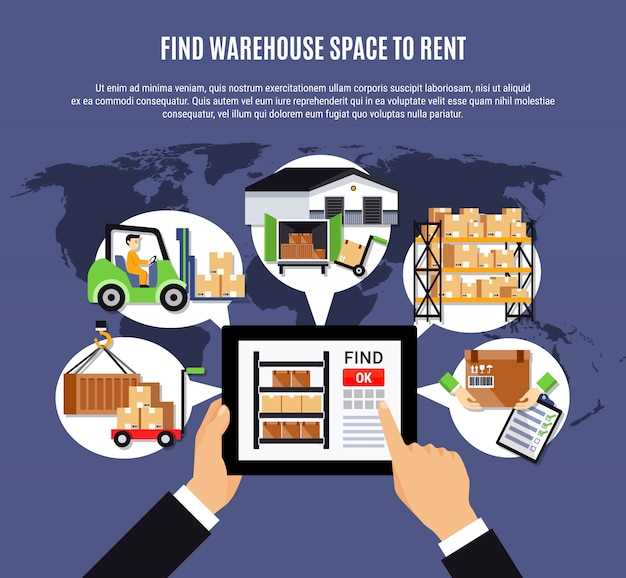Implement an OMS now to centralize order flow and avoid manual errors. It manages orders from site, marketplaces, and stores, and provides an outline of each step from capture to delivery. With this system you can expand visibility across inventory, warehouse, and resource management, maintain accurate data, and reorder automatically to reduce stockouts. Process through a single dashboard for timely delivery, labels, and status updates, while tracking the financial impact and identifying inefficiencies for several teams, ever present in manual processes, and avoid stockouts where possible.
From capture to fulfillment, the OMS provides a clear outline of the lifecycle and coordinates data across your site and warehouses. It automatically routes orders prostredníctvom stránky . the fastest fulfillment paths, prints labels, and creates pick lists. It supports reorder triggers, real-time inventory visibility, and backorder management, keeping customers informed and reducing rush rework. Through standardized APIs, you connect ecommerce, ERP, and carrier services with minimal coding.
Typically, an OMS reduces order cycle time by 25–40% and lifts on-time delivery to 98–99% across multi-site networks. It tightens pick accuracy to above 99%, minimizes stockouts by automating reorder triggers, and cuts backorders by 30–50%. By consolidating demand and supply signals, you avoid disruptions and excess costs. This is considered standard practice by many analysts.
To implement effectively, start with three pilots: one site, one marketplace, and one carrier connection. Map core KPIs: order cycle time, fill rate, perfect-order percentage, and delivery ETA accuracy. Align automation on label printing, reorder thresholds, and carrier tracking updates. Maintain clean data by deduplicating customers, standardizing SKUs, and validating addresses. This approach shortens time-to-value to roughly 8–12 weeks for a mid-size operation and helps you avoid bottlenecks that stall fulfillment.
Overview of order management concepts and practical scope
Implement centralized order tracking across sites to improve visibility from order capture through delivery, and connect sales data with inventory and production plans. A robust database layer supports a single source of truth, reduces manual entry, and accelerates responses to client and partner inquiries here.
This approach improves performance across the order flow and relies on a robust infrastructure to scale with volume and sites.
Core concepts map to the end-to-end flow: capture, routing, allocation, fulfillment, and post-delivery follow-up. Tracking provides almost real-time visibility into where each order sits in production, inventory, and shipping. Monitoring and notifications keep teams aligned, so client expectations stay accurate and delivered dates are reliable.
The system doesnt require constant manual reconciliation, thanks to automated data propagation and real-time monitoring.
Practical scope spans sites, warehouses, and manufacturing lines, with an emphasis on real-time visibility and automation. To keep it simple, include integration with ERP, CRM, and third-party logistics to reduce costs and improve service levels. The volume of orders and channels drives the need for scalable infrastructure that can receive data from multiple sources and update the database automatically. Key factors include lead times, buffer stock, production capacity, and carrier performance; each factor affects timelines and costs.
| Aspekt | Practical scope and notes |
|---|---|
| Order capture | Source orders from sites and channels; feed data to the database and receive updates from channels. |
| Inventory synchronization | Real-time view across warehouses and production; reduces stockouts. |
| Production planning | Link demand to production capacity; monitor progress and adjust schedules. |
| Fulfillment and shipping | Track packing, carrier handoffs, and delivery status; provide client notifications. |
| Monitoring and alerts | Automates monitoring and sends notifications for exceptions. |
| Analytics and costs | Analyze volume, throughput, and investment impact on margins. |
| Data model and database | Centralized database with robust schema supporting integrations. |
| Infrastructure and integration | Connects sites, ERP, WMS, e-commerce platforms to streamline data flow. |
What problem does an OMS solve for your team?

Implement an OMS to centralize order data and remove fragmented handoffs across your team. It provides a clear single source of truth that speeds delivery to your customers.
Thus, the system collects data from orders, inventory, carrier updates, and payments, giving you end-to-end visibility across every area.
This visibility improves accuracy and reduces inefficiencies that slow processes during peak times.
With this foundation, you deliver on the right line items and can handle special cases without manual rework, across each area.
It moves teams away from spreadsheets toward a program that can handle high order volume a generation of status updates in real time, reducing times to act.
Ako a result,. company gains differentiation a competitive advantage through faster, more accurate fulfillment.
Ensuring full lifecycle coverage–from capture to revenue realization–this approach aligns with needs and protects revenue.
Start with a targeted area to demonstrate ROI, then scale the program across the organization.
Thus, you can move beyond generic processes and build a platform that supports growth, volume, a generation of insight for decision-making.
What data does an OMS centralize? (orders, inventory, shipments, returns)
Centralize four data domains in one OMS–orders, inventory, shipments, and returns–to unlock immediate visibility and faster processing across the network. A unified data model lets logistics teams act on real-time insights rather than chasing updates from multiple systems.
Data centralized by the OMS covers these domains:
- Orders: order_id, customer_id, items (sku, quantity), prices, discounts, status, requested_delivery_window, changes, fulfillment_stage.
- Inventory: on_hand, allocated, in_transit, warehouse_location, batch/lot, expiration (where applicable).
- Shipments: routing, carrier, tracking_numbers, labels, events, ship_date, delivery_eta, exceptions.
- Returns: return_id, order_id, reason_code, authorization_status, disposition, restock, credits.
To maximize value, ensure these data streams feed into integrations with ERP, WMS, and TMS, creating a clear data loop that keeps the target delivery commitments on track. Platforms from körber offer a mature data model that maps these domains across multiple warehouses, helping you reach an entire view of the operation and realize huge potential.
Whats next is to scale integrations to more platforms and locations, extending the same data centralization benefits across the network and unlocking greater potential.
Implementation steps you can take now:
- Map data fields across systems and agree on naming conventions (order_id, sku, warehouse_id, etc.).
- Validate data quality and resolve duplicates or mismatches; set automated checks for every update.
- Define data update cadence and what constitutes a valid status change (processing, in_transit, delivered, returned).
- Set up dashboards and alerts for exceptions in routing, inventory levels, or return approvals to reduce manual reviews.
- Align terms with partners and carriers to ensure consistent expectations around delivery windows and charges.
besides, monitoring these domains together improves the entire flow, from order capture to final delivery, elevating efficiency and enabling a greater level of control over the delivery path. This approach supports sales teams as well as logistics, enabling you to reach the target service level and avoid unnecessary back-and-forth at the processing stage.
How does OMS handle cross-channel and cross-warehouse routing?

Use a centralized routing engine that automatically assigns orders by channel and warehouse based on real-time signals. This approach allows you to balance speed and cost, generating faster confirmations and reducing friction for shoppers. The routing plan supports cross-channel routing and cross-warehouse routing, keeping live visibility across inventory, capacity, and transit costs so teams can make decisions in seconds. Decisions occur in under 200 ms in typical setups.
Through channel-specific rules, the OMS maps each incoming order from online stores, marketplaces, and mobile apps to the fulfilment path that best matches stock, proximity, and customer expectations. This reduces negative delays and keeps the shopping experience smooth, preventing frustrated buyers from abandoning carts. The system can confirm a routing decision or generate a confirmation to the customer, and it raises alerts when stock is insufficient or a channel SLA is at risk, helping teams stay on plan and making the process more predictable.
Across warehouses, live inventory feeds and transit data drive automated decisioning. If the closest facility lacks enough stock, the engine routes to the next best warehouse with the right mix of speed and cost. This keeps costly last-mile moves down and increased delivery speed for the customer. Cross-warehouse routing can cut transit distances by 25-40% compared with single-warehouse pathways. Firms that have a global inventory view see stronger results.
Operational practices focus on maintain strict control over routing rules: define service levels per channel and per warehouse, set thresholds, and enable alerts for exceptions. With a clear plan, teams manage contingencies and communicate with customers via a timely confirmation. The approach is highly scalable, supports generating things like substitutions or split shipments, and is likely to reduce frustration while maintaining fast, reliable shipping across channels and facilities. Maintaining accurate data across systems is critical. In pilots, firms report 10-15% higher on-time delivery and 5-12% lower shipping costs.
What are Step 4 delivery tracking capabilities: real-time status, ETAs, and carrier updates
Start by wiring live carrier feeds into Step 4 and presenting a clear status stream on the customer-facing page. A real-time view reduces support inquiries and keeps customers informed as a shipment moves through milestones.
Core capabilities include real-time status, precise ETAs, and carrier event alerts. The OMS should ingest events such as Picked up, In transit, Arrived at hub, Out for delivery, and Delivered, then map them to a concise progress log in the UI. Use ETA calculations based on carrier data and route history, refined by current traffic, weather, and last-mile performance.
To achieve accuracy, maintain a single source of truth for each shipment by linking carrier feeds to the OMS via stable connections. Use retry logic and fallback paths when a feed is temporarily unavailable.
Measure success with metrics such as update latency (target under 2–3 minutes for domestic lanes), ETA window accuracy within 15–20 minutes when data from carriers is available, and the share of status mismatch errors. Ensure the main carrier connections cover most shipments; for cross-border flows, add a secondary data source to reduce gaps.
Craft a consistent status narrative across devices. Show a clear “Delivery estimate” and next milestone. When delays occur, trigger proactive notifications in the customer portal and optional email or SMS alerts to keep customers informed and reduce support load.
Architectural notes: keep the integration lean, document the status lifecycle, and align with your customer experience goals. Regularly reassess with operations and customer support to refine triggers and thresholds, ensuring a smooth delivery tracking experience.
Which metrics demonstrate the impact of delivery tracking and customer notifications
Always establish a baseline by measuring on-time delivery rate, ETA accuracy, and delivery window adherence. Track notification effectiveness via open rates and click-through rates across channels on the site, email, SMS, and push. Monitor carrier performance with tracking event depth and update latency. These metrics reveal how delivery tracking and customer notifications influence the customer experience and commerce, and they help you identify where keeping customers informed still reduces support inquiries.
- Operational accuracy: On-time delivery rate, ETA accuracy, and first-attempt delivery; target: >95% on-time and ETA within ±30 minutes in urban zones; monitor weekly and trend monthly to see faster improvements over quarters.
- Tracking and monitoring depth: Number of tracking events per order, status updates latency, and carrier response time; aim for 5–7 events per order and <5-minute update latency; this gives you deeper visibility and reduces back-and-forth inquiries.
- Notification performance: Delivery of notifications, open rate, click-through rate, and unsubscribe rate; measure by channel (site, email, SMS, push); target higher engagement on channels with best response; monitor this across campaigns.
- Channel effectiveness: Channels across site and other touchpoints; ensure consistent messaging; faster notification across channels increases customer confidence.
- Cost and accounting impact: Cost per delivery, cost-to-serve, and refunds due to delays; link to accounting for final reconciliation; monitor this to ensure the cost remains acceptable and improvements are cost-effective.
- Customer feedback and support interactions: CSAT and NPS related to delivery experience; pull feedback after each notification; highly correlated with lower contact volume and higher loyalty.
- Integrations and data hygiene: Number of integrations (OMS, WMS, ERP accounting, carriers) and data freshness; aim for a single source of truth and monitoring uptime; this helps the overall view and reduces errors.
To maximize impact, build a dashboard with a single source of truth that combines this data, and set thresholds to alert teams when any metric drifts beyond the target. This approach, supported by imarticus guidance, keeps teams aligned and enables faster decision-making. Keep a tight feedback loop where site and channel notifications are tested, refined, and extended effortlessly, leading to increases in customer satisfaction and commerce outcomes.

 Čo je riadenie objednávok? Výhody systému riadenia objednávok (OMS)">
Čo je riadenie objednávok? Výhody systému riadenia objednávok (OMS)">
